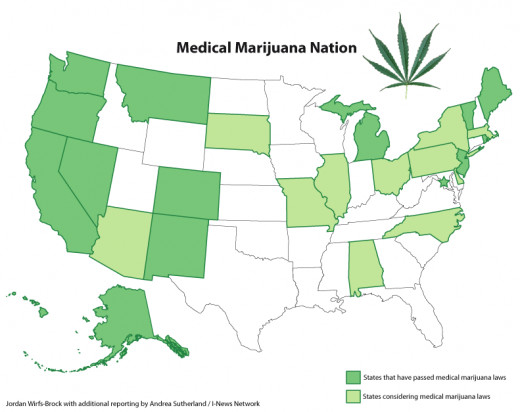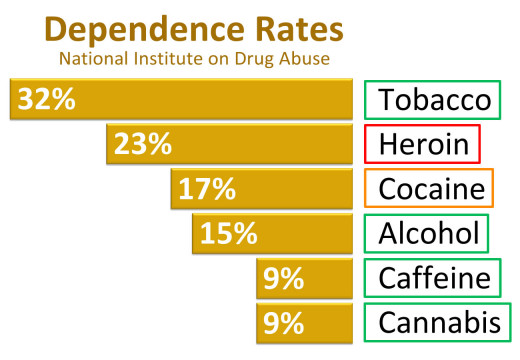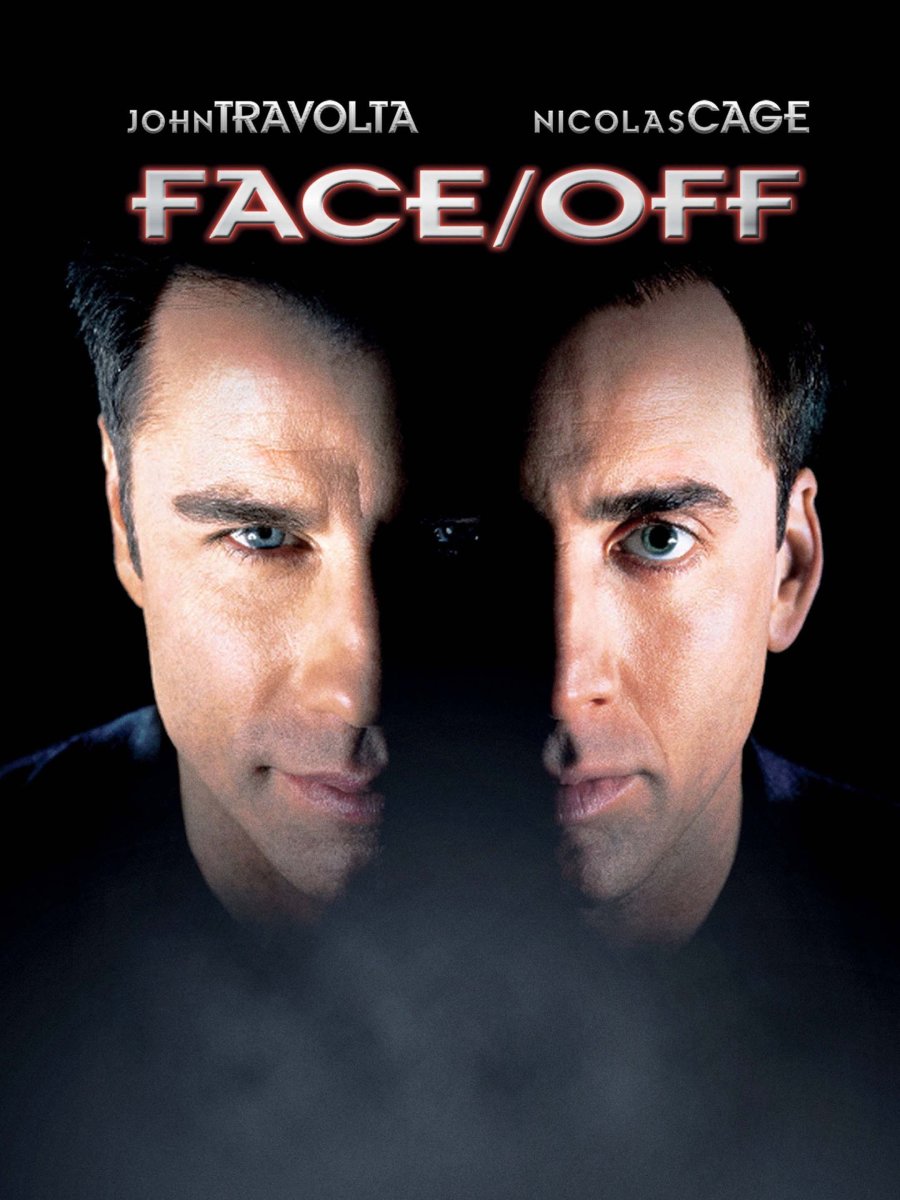Common Sense look at Rescheduling Marijuana
"Schedule I drugs, substances, or chemicals are defined as drugs with no currently accepted medical use and a high potential for abuse. Schedule I drugs are the most dangerous drugs of all the drug schedules with potentially severe psychological or physical dependence. Some examples of Schedule I drugs are:
heroin, lysergic acid diethylamide (LSD), marijuana (cannabis), 3,4-methylenedioxymethamphetamine (ecstasy), methaqualone, and peyote"
-Drug Enforcement Agency
According to the DEA a Schedule 1 substance is a substance that has “no currently accepted medical use, and high potential for abuse…with potentially severe psychological or physical dependence.”
Schedule 1 is the highest scheduling the DEA can give and is meant to contain the most harmful known substances. Even cocaine, methamphetamine, and methadone are only classified as schedule 2.
"No currently accepted medical use"
The first part of the Schedule 1 definition states a Schedule 1 substance has no accepted medical use.
Despite marijuana being listed as Schedule 1, Collective Evolution cites twenty different medical journals from around the world with evidence confirming its medicinal qualities. Among those was a study done by The British Journal of Cancer. The journal's research determined that the active chemical in Marijuana, Tetrahydrocannabinol (or THC), inhibits tumor growth and in some cases can even destroy cancer cells.
Another study, from The Journal of Pharmacology and Experimental Therapeutics, found significant anti-tumor activity produced by Cannabidiol (CBD), another component of marijuana. The US National Library of Medicine which determined CBD inhibits breast cancer proliferation and a Harvard Medical study determining THC inhibits epithelial growth in lung cancer. For further research, here are over one hundred medical journals that discuss the medicinal benefits of marijuana.
Marijuana is also used as an appetite stimulant for patients and other patients who have severe difficulties keeping food down. Currently, the U.S. uses a chemical extract of marijuana to treat the nausea and vomiting associated with chemotherapy.
Cancer.gov, a U.S. government sponsored website, admits to the benefits and medicinal uses of marijuana, and states that patients using THC “reported potential antitumoral activity. If a government website openly admits to the medicinal potential of marijuana, how can the DEA continue classifying it as having no “currently accepted medicinal use”?
As far as being "currently accepted," the map below shows fifteen U.S. states that currently accept that medicinal use of marijuana.
Medical Marijuana Map


Comparative Dangers of Marijuana
The second half of the Schedule 1 definition states that schedule 1 drugs are: "the most dangerous drugs of all the drug schedules with potentially severe psychological or physical dependence." However, marijuana is less harmful than almost all scheduled substances, and is less habit-forming than caffeine, alcohol and tobacco.
According to drugabuse.gov marijuana can lead to a decrease in motivation, tardiness at work and high job turnover. Drugabuse.gov also lists Schedule 2 substance side-effects that include: cardiovascular problems, hyperthermia, hallucinations, death. It stands to reason that substances that can cause death, heart problems and heat strokes are more dangerous than substances that lead to decreased motivation and tardiness at work.
Does marijuana have a ‘high potential for abuse’ with the high risk of ‘physiological or psychological dependency’? The answer, unsurprisingly, is no. At least not comparatively.
The phrasing “has high potential for abuse” refers to addiction. Addiction research shows that only 9% of regular marijuana users develop an addiction on average. This means that over 90% of marijuana users never become addicted. Compared to the 32% of tobacco users, 23% of heroin users, 15% of alcohol users and 17% of cocaine users. In fact a study published by Nature Neuroscience claims that even fast food might have more addictive properties than marijuana. Combined with fast foods' known negative effects on health, it’s might be reasonable to claim fast food is a better-suited candidate for schedule 1 than marijuana.
Do you believe marijuana should remain a Schedule 1 substance?
Marijuana and Brain Damage
One of the reasons why marijuana was labeled as dangerous is a study done in 1974. This study commonly referred to as "The Heath/Tulane study" consisted of giving a monkey the equivalent of 2,700 high-potency marijuana cigarettes for 90 days straight. That’s roughly one and a quarter joints per hour.
When the monkey finally died, the researchers found that the monkey had lost a portion of brain cells, and concluded that marijuana smoke must be linked to brain-cell death. They also concluded that there must be a potential for overdose by marijuana.
This study did not account for the lack of oxygen that the monkey was experiencing. The monkey was kept inside an enclosed space and subjugated to nonstop smoke for ninety days. The monkey's brain was not losing cells from marijuana, it was losing them from cerebral hypoxia.
According to the National Institute of Neurological Disorders and Stroke, cerebral hypoxia is "a condition in which there is a decrease of oxygen supply to the brain even though there is adequate blood flow." Cerebral hypoxia can result in severe brain damage or death. It's important to remember that smoke of any kind can deprive the brain of oxygen.
Since the Heath/Tulane study there has been no research suggesting that marijuana by itself leads to brain damage. Currently, the government accepts that you can't overdoes on marijuana.
Schedule IV
"Schedule IV drugs, substances, or chemicals are defined as drugs with a low potential for abuse and low risk of dependence. Some examples of Schedule IV drugs are:
Xanax, Soma, Darvon, Darvocet, Valium, Ativan, Talwin, Ambien"
-Drug Enforcement Agency
Rescheduling
Marijuana meets zero qualifiers for a schedule 1 drug. There’s a wellspring of medical journals proving its medicinal purposes, and there’s physiological and psychological research showing its lack of highly addicted properties.
Based off precedence, it might not deserve to be a scheduled substance at all. I.e., it’s less addictive than alcohol and tobacco and substantially less harmful per-capita. Every year tens of thousands of people die from of alcohol poisoning and cigarette-related diseases, yet zero die from marijuana overdose. However, both alcohol and tobacco remain unscheduled substances.
In reality, according to the DEA’s classifications, descheduling marijuana would still be an unsound move. Marijuana does meet the requirements for Schedule 4. So while tobacco and alcohol do deserve to be scheduled substances, marijuana does too.
A Schedule 4 substance is one with low potential for abuse, and low risk of dependence. Xanax and Ambien are some examples of these types of substances. While marijuana may be less harmful than most Schedule 4 drugs, it does have notable negative side effects and a relevant correlation with abuse.








